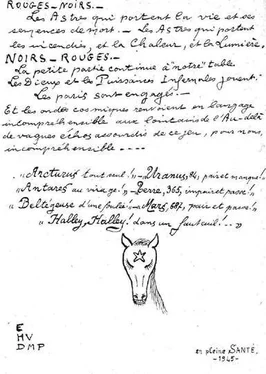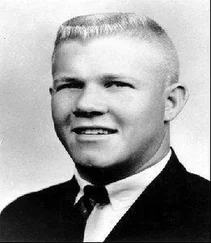It was indeed this time—from the summer of 1942 to Petiot’s arrest in May 1943—that represented the height of the Petiot reign of terror, when Dr. Paul started finding the first dismembered body parts, with the signature scalpel marks, pulled out of trunks from the Seine or parcels dropped around town. It was also after this summer confrontation that every known gangster sought Petiot’s escape agency. Every one of them, too, had ties to Lafont. Indeed, given the extent of Lafont’s power and knowledge of the criminal world, which was fueled by many informers, it is difficult to believe that an operation with the ambitions of Petiot’s agency could have flourished without his awareness or approval.
The Liberation ended the golden age of crime for Lafont and his gang. The French Gestapo went on the run, its members fleeing to Spain, South America, Quebec, pre-Castro Cuba, or sometimes into the underground or hiding inside the Resistance. After handing out false papers to his own men, and insisting on the destruction of his gang files, Lafont fled to a small estate some forty-five miles from Paris, outside Bazoches. There, thanks to a tip from one of his own men, Joseph Joinovici, Lafont and Bonny and Paul Clavié were arrested on August 30, 1944.
One of Clavié’s letters from his prison cell 120 on the quai de l’Horloge was intercepted by authorities. Writing to an unknown recipient, as he awaited his upcoming trial for treason, Clavié now urged that a certain “Dr. P” be immediately arrested. Clavié described how he had worked with him since 1938, and the physician was “very guilty.” After confessing that he had found the doctor frightening, Clavié identified the reason why this man must be immediately arrested: the doctor “knows everything.”
EPILOGUE
DESPITE winning a conviction for twenty-six murders, the prosecution never satisfactorily explained how the defendant was supposed to have killed his victims. In the opinion of the vast majority of biographers, Petiot used an injection, perhaps of strychnine or, as John V. Grombach proposed, an injection of an air bubble into the victim’s veins. Other suggestions have included a distance-operated syringe, poison gas, or even a simple glass of wine laced with poison and drunk in a toast to the upcoming journey to freedom. Few, however, have offered any arguments or evidence for their theories.
Throughout the narrative, I have attempted to make clear what is fact and what is speculation. What follows is speculation, because no one knows for certain what Petiot did to his victims. He never made a full confession and authorities never cleared up the mystery.
There are good reasons for suspecting that Petiot used an injection. As a doctor, he could easily obtain poison and concoct a credible excuse to administer it. As both Renée Guschinow and Jean Gouedo testified, Joachim Guschinow was told by Petiot that he would require injections before his journey to South America. Ilse Gang also heard that the Wolff family would receive injections, and Michel Cadoret de l’Epinguen said that Petiot had personally told him that health regulations for entry into Argentina mandated them. The press latched on to the theory of injections, circulating it widely by the time of the trial, leaving a lasting impression on Petiot biographers for sixty-five years.
When I began researching this book, I also assumed that Petiot’s modus operandi was an injection. I have since qualified my stance. Petiot did use one, but the aim was probably not to kill. Under the guise of vaccinations or inoculations for the journey, or visa health requirements, or some other excuse, Petiot probably used an injection to weaken the resistance of his victim. It was not poison—after all, no poison was ever found on the premises at rue Le Sueur, rue Caumartin, or any of his other properties. Morphine and peyote, on the other hand, were present in vast quantities.
These particular narcotics have powerful sedative effects. They would allow the victim to cooperate with Petiot’s demands, whatever these might have been. At the same time, either of these drugs would allow the victim to remain coherent enough to copy a text or take dictation. The victims then wrote out the short letters to relatives, which Petiot said he would send once he had confirmed their safe arrival. This use of drugs would also account for the curious claims in many of the letters (Braunberger’s, Guschinow’s, and Kneller’s, for example) that the writer or a family member had fallen sick on their journey, thereby explaining in advance any irregularities in the handwriting. Then, after writing the cards, the victim would be moved into the triangular room. The use of morphine or peyote would also explain another fact that puzzled observers, namely, how Petiot could handle strong gangsters like Adrien the Basque—and then also why investigators never found any physical evidence of anyone having attempted to break out of the small room.
As for the triangular room, was it really necessary for Petiot to make extensive renovations if he simply planned to kill by injection? Was it by chance that he had hired a firm that had just that year finished the construction of a major municipal slaughterhouse in Limoges? The particular changes he made are indeed curious: Petiot was creating a small room, located separately from the main building, with no windows, very thick, reinforced walls with a viewing lens on the outside, and all of this also being soundproof and almost airtight—and it could be made so, Professor Griffon testified at the trial, by the mere insertion of a rug under the door. Even if the prosecution could not produce a rug, Petiot, a dealer in antiques, would not have had any difficulty. As for the gas masks inspectors found, all of these did not necessarily have to have belonged to the victims, and the gas mask found in Petiot’s office may not have been only for covering the stench of the cadavers. And when Petiot explained his renovations to the builders, he told them he was constructing a radiation chamber—a good alibi, I suspect, for his real purpose: a gas chamber.
My doubts about death by injection grew over the years, but increased most of all when I had the good fortune of unearthing a rare source about Marcel Petiot, published in Belgium in March 1944, only a couple of weeks after the discovery of the remains at rue Le Sueur. The small book, Albert Massui’s Le cas du Dr Petiot , was indeed valuable, but it had one piece of extraordinary testimony: a firsthand account of a young man who applied to Petiot’s escape organization and claimed to have lived through the entire selection process. Could this possibly be genuine? After much consideration, I believe so.
The man was identified only as Raphaël K. His last name was withheld because at the time of publication, the Nazis still occupied Paris and he hoped to find a way to flee Europe. His family urged him to remain quiet. People would be skeptical, he was told, and indeed, this was an all-too-frequent occurrence at that time (1942), when the first Jews who escaped from Nazi camps tried to warn other people about the shocking, incomprehensible atrocities that they had experienced. Note, too, that this young man’s account appeared in print before Petiot’s methods were widely known.
In June 1942, Raphaël K applied to Petiot’s escape organization. After paying his fees, which were lower than any other known charge (5,000 francs), Raphaël received instructions very similar to other clients’. He was told to arrive at the corner of rue Championnet and rue Damrémont, in the 18th arrondissement, where he was taken in a disorienting way across the city until he arrived at the hair salon. There, in a back room, Raphael reconfirmed his intention to leave Paris. “I do not have to know why,” the doctor told him. “I am sure it is for excellent reasons.”
Читать дальше












